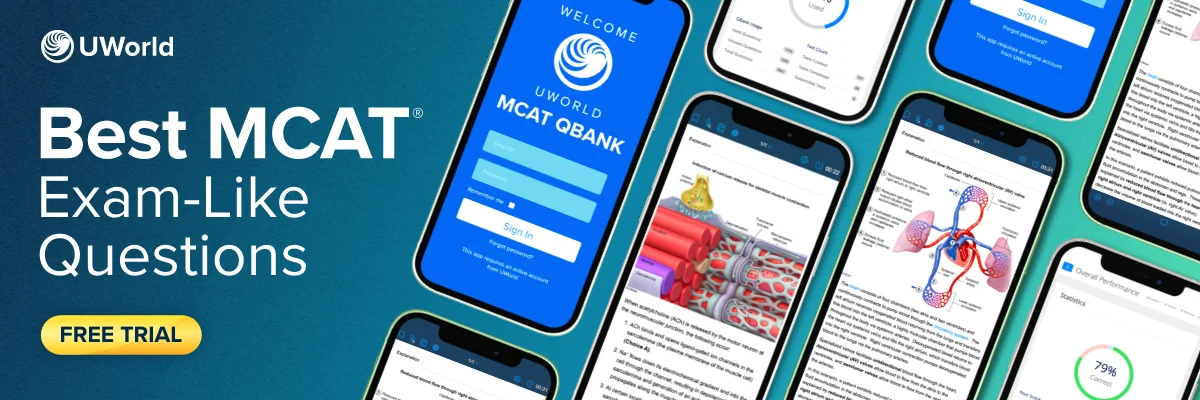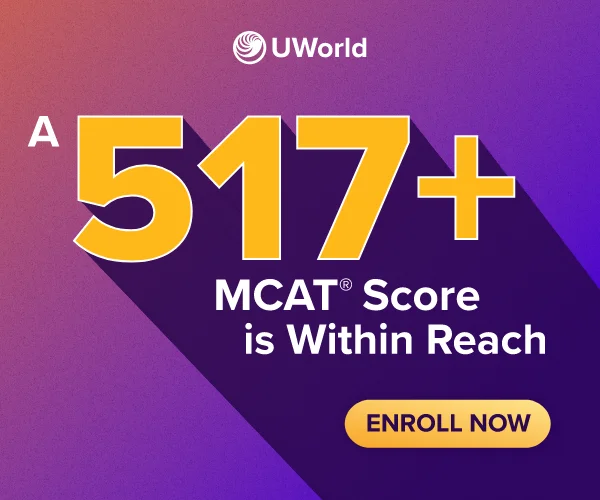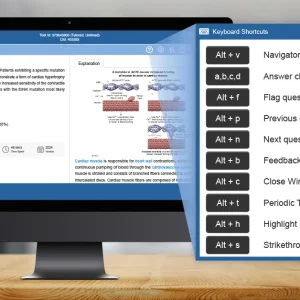There are three general phases to becoming a doctor: undergrad, medical school, and residency. Along the way, aspiring MDs must complete the United States Medical Licensing Examination® (USMLE®), while aspiring DOs must complete the Comprehensive Osteopathic Medical Licensing Examination® (COMLEX®). The process usually takes about 11 or 12 years, depending on your specialty (4 years for undergrad, 4 years for medical school, and 3+ years for residency). You can then decide whether to pursue a subspecialty or begin your clinical career.
1. Complete Your Undergraduate Studies
The first step in becoming a doctor is completing your undergraduate degree. While choosing a school with a good pre-med program is preferred, it's not required. Pre-medicine itself is not a major; it's simply a program with unique healthcare-related opportunities for students who intend to pursue medical school. It's completed during a normal undergraduate track.
What Are the Best Pre-Med Majors?
There's a common misconception that pre-med students must major in the sciences (eg, biology, biochemistry, neurobiology, physical sciences, molecular biology, etc). As the Association of American Medical Colleges (AAMC) puts it, "There's no required or even preferred majors that medical schools are looking for." They suggest that pre-med students choose a subject they're interested in.1 Doing so will keep you motivated in your coursework, lead to better performance, and could make your medical school application more unique.
What Classes Are Required for Medical School?
While most medical school requirements and recommendations are the same, you should still check them on your preferred medical schools' websites. Additionally, students interested in allopathic medicine (MD) can use the Medical School Admission Requirements™ (MSAR®), while those interested in osteopathic medicine (DO) can use the American Association of Colleges of Osteopathic Medicine (AACOM) Choose DO Explorer.
How to Prepare for the MCAT®
During your undergraduate studies, you will need to take the Medical College Admission Test® (MCAT). To maximize your MCAT score and build a competitive medical school application, you should get familiar with the MCAT itself and consider using a quality MCAT prep resource. The exam is designed to determine your skills and knowledge in topics correlated with success in medicine. It covers four sections:
- Biological and Biochemical Foundations of Living Systems
- Chemical and Physical Foundations of Biological Systems
- Psychological, Social, and Biological Foundations of Behavior
- Critical Analysis and Reasoning Skills (CARS)
These subjects are a big reason why many pre-meds major in the sciences, though much of the material is covered during introductory-level science courses.
Apply to Medical School
Getting accepted into your preferred medical school can be difficult, as the application process is highly competitive. Start building your resume early, and seek out extracurricular experiences that will make your application stand out. Aspiring MDs will complete a primary application through the American Medical College Application Service® (AMCAS®), while aspiring DOs will use the American Association of Colleges of Osteopathic Medicine Application Service (AACOMAS). Next is a secondary application through your specific medical school and a final interview if you are being considered.
2. Complete Medical School
The second step in becoming a doctor is completing medical school. In many cases, medical school lasts for four years and is divided into pre-clinical and clinical phases. As described by the AAMC:
"The pre-clinical phase includes two years of science training when you learn about basic medical concepts, the structure and functions of the body, diseases, diagnoses, and treatment concepts. You'll also learn the basics of doctoring, such as taking medical histories and other essential competencies.2"
The clinical phase, known as clinical rotations, is when you'll begin to work with patients. Clinicals are designed to give you hands-on experience in the main medical specialties and typically take place in years three and four of medical school.
When to Take USMLE Step 1 & COMLEX Level 1
Once you start medical school, you should plan your preparation strategy for the USMLE or COMLEX. Students usually take USMLE Step 1 or COMLEX Level 1 toward the end of their second year of medical school. This first stage of your three-part licensing exam assesses your understanding of important pre-clinical concepts.
Clinical Rotations & Shelf Exams
Clinicals generally begin in year three of medical school and give students experience in specialties like:
- Internal Medicine
- Family Medicine
- Obstetrics and Gynecology
- Pediatrics
- Psychiatry
- Surgery
This patient work is supervised by a faculty member, fellow, or resident, and can vary in specialty and duration depending on your medical school. At the end of each rotation, you will need to take a shelf exam to display your competence and knowledge in the subject. Check your medical school's website for more information regarding which clinicals you will be required to take, as well as available electives.
When to Take USMLE Step 2 CK & COMLEX Level 2
The second part of your licensing exam, USMLE Step 2 CK or COMLEX Level 2, is usually completed at the end of year three or into year four of medical school. These exams focus more on your clinical judgment skills, and reflect a lot of the same concepts tested on your shelf exams. For this reason, it's useful to prepare for Step 2 or Level 2 as you prepare for your shelf exams.
Residency Matching
Most medical students know what specialty area they'd like to pursue professionally by the end of their third year, and take steps over the next year to develop specialty-specific skills. This all culminates in Match Day (which takes place in March), when MDs and DOs are matched to residency programs. During this period, you will have access to a number of resources that will help you settle on a specialty and get matched to a preferred program.
What if I Don't Match to a Residency Program?
Fortunately, less than 10% of U.S. medical school graduates fail to match. As explained by the American Medical Association (AMA):
"During Match Week, unmatched applicants and unfilled programs will work to match with one another through the National Resident Matching Program's existing Supplemental Offer and Acceptance Program (SOAP)."
Unmatched students can also use FREIDA™ to research residencies from more than 13,000 programs both during and after SOAP. Additionally, it's important to note that not all graduates match to their preferred programs. In 2023, 48% of allopathic students matched with their top choice, while 73% ended up in one of their top three. For osteopathic students, these figures were 46% and 75%, respectively.3
3. Complete Residency
The third step in becoming a doctor is completing residency. Here, resident physicians receive post-graduate training and hands-on experience in their chosen specialty area by working with patient care teams under the supervision of attending physicians.
When to Take USMLE Step 3 & COMLEX Level 3
The third and final part of your licensing exam, USMLE Step 3 or COMLEX Level 3, is usually taken by residents during their first or second year of residency training. While the historical pass rates over the past decade are rather high (over 95%), you should still take the exams seriously. The material is difficult, though candidates at this stage of their education are highly knowledgeable and skilled and understand how they prepare best for high-stakes exams.
Get Your Medical License & Pass Your Board Exam
As you complete residency, it's worthwhile to check your state's medical licensure requirements. In many cases, it can take up to two months to receive your license once you submit your application. Depending on your specialty, you should also consider becoming a board-certified doctor. Two common board certifications are in Internal Medicine and Family Medicine. During your final year of residency, you can apply to take a board exam.
Consider a Medical Fellowship
Once you complete residency, you can become an attending physician or pursue subspecialization through a fellowship. This decision largely depends on your long-term goals and where you would like to take your clinical career. Fellowships usually last between one to three years and may require another certification exam.
4. Maintain Certification
Once you've completed your education and are licensed to practice as a doctor, you will need to maintain your medical license based on your state's licensure requirements. This is done to ensure you're up to date with current practices and procedures. If you've completed a board certification, you will have continuing certification requirements through the American Board of Medical Specialties (ABMS).
Is Becoming a Doctor Worth It?
Becoming a doctor is a challenging yet rewarding process that takes dedication, perseverance, and a commitment to lifelong learning. And while the job itself requires long hours, patience, emotional investment, and a willingness to follow strict procedures, doctors generally enjoy stable, high-paying, prestigious careers. Most importantly, they truly change lives for the better. Only you can decide if becoming a doctor is worth it, but there are few jobs that are as rewarding or have as big of an impact.








